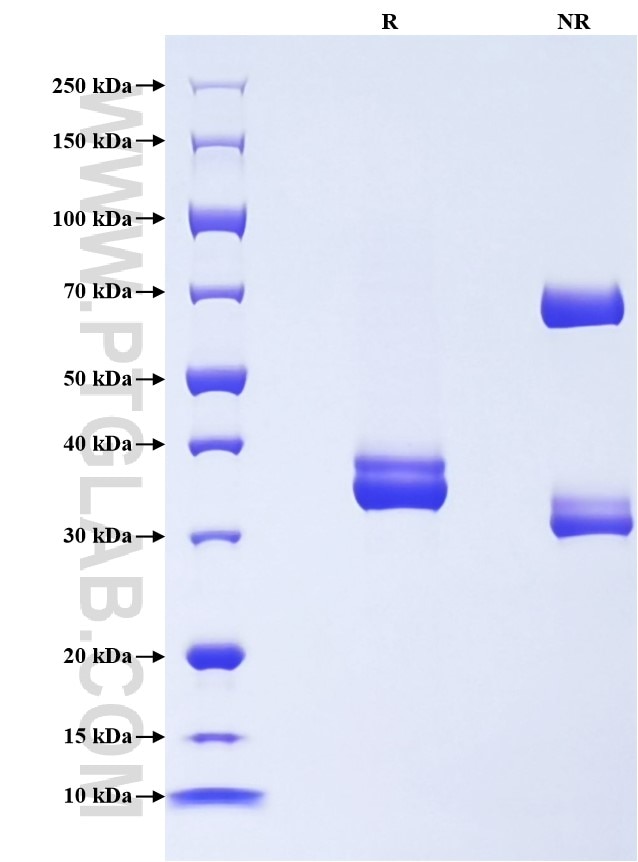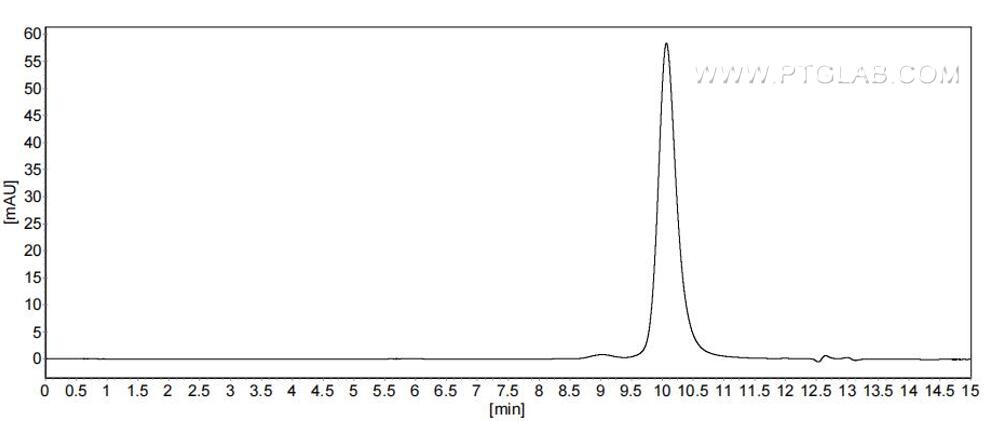Recombinant Human SMR3B protein (rFc Tag) (HPLC verified)
Species
Human
Purity
>90 %, SDS-PAGE
>90 %, SEC-HPLC
Tag
rFc Tag
Activity
not tested
Cat no : Eg3081
Validation Data Gallery
Product Information
| Purity | >90 %, SDS-PAGE >90 %, SEC-HPLC |
| Endotoxin | <0.1 EU/μg protein, LAL method |
| Activity |
Not tested |
| Expression | HEK293-derived Human SMR3B protein Gln23-Pro79 (Accession# P02814) with a rabbit IgG Fc tag at the C-terminus. |
| GeneID | 10879 |
| Accession | P02814 |
| PredictedSize | 31.8 kDa |
| SDS-PAGE | 33-38 kDa, reducing (R) conditions |
| Formulation | Lyophilized from 0.22 μm filtered solution in PBS, pH 7.4. Normally 5% trehalose and 5% mannitol are added as protectants before lyophilization. |
| Reconstitution | Briefly centrifuge the tube before opening. Reconstitute at 0.1-0.5 mg/mL in sterile water. |
| Storage Conditions |
It is recommended that the protein be aliquoted for optimal storage. Avoid repeated freeze-thaw cycles.
|
| Shipping | The product is shipped at ambient temperature. Upon receipt, store it immediately at the recommended temperature. |
Background
SMR3B is a protein with endopeptidase inhibitor activity and is involved in various cellular processes. It is overexpressed in various cancers and is a potential therapeutic target. SMR3B is predicted to have endopeptidase inhibitor activity. It is involved in cellular response to lipopolysaccharide, negative regulation of peptidase activity, and regulation of sensory perception of pain. It is located in extracellular exosomes. It is overexpressed in various cancers and has pleiotropic effects, leading to cellular characteristics such as sustained proliferation signals, replicative immortality, genomic instability and mutations, resistance to cell death, and angiogenesis. It is predominantly expressed in the salivary gland.
References:
1. Casarin RCV, Salmon CR, et al. (2023) J Clin Periodontol. 50(7):942-951. 2. Baněčková M, Thompson LDR, et al. (2023) Am J Surg Pathol. 47(6):661-677. 3. Liu J, Zhao S, et al. (2023) Chin Med J (Engl). 136(2):184-193. 4. Skálová A, Banečkova M, et al. (2020) Am J Surg Pathol. 44(10):1295-1307.

